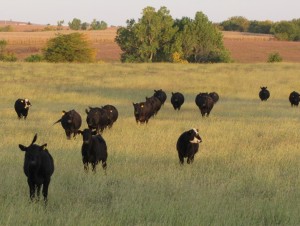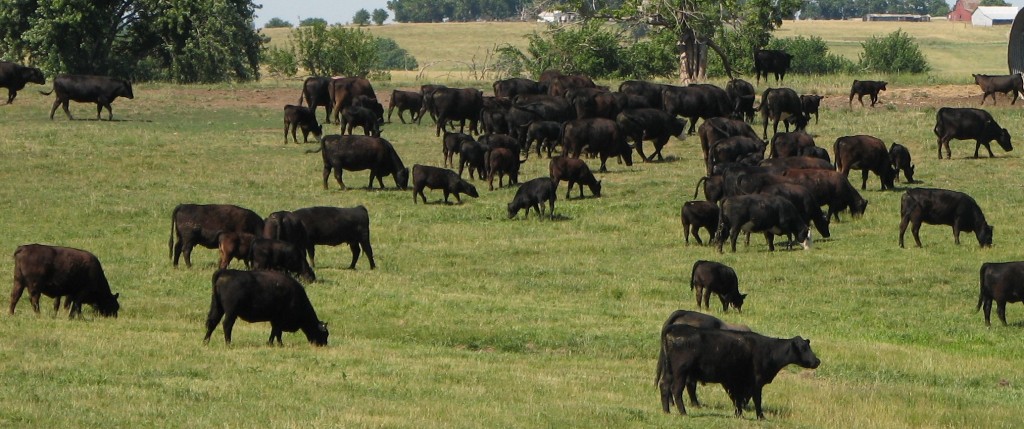Yesterday, Miranda told us about some Angus seedstock producers as representatives of the Certified Angus Beef brand’s stockholders. Now here are a few words from my perspective as a commercial producer who learned some lessons from the school of hard knocks.
There used to be twice as many of us, what USDA calls “farms with beef cows.” That was back when I was growing up in the 1960s and ’70s on a diversified farm that backgrounded 350 calves each winter, holding a small end over for summer grazing. Three decades of that led to an ultimate breakeven.
Sometimes we had a few cows—commercial, not registered—mainly to diversify the cattle enterprises. I’m sure profit was the main goal, but with so many enterprises, we never knew for sure where we stood. To this day, and my herd included, net profit is often hard to figure.
I got the first part of my own place in 1980 and ran grass stockers a couple of years before starting a commercial cowherd. It was based mainly on the cheapest cow-calf units I could buy, bred to unknown, leased bulls probably acquired with the same plan.
That evolved as I acquired the means to buy better and learned more about the big picture, consumer demand, not just commodity demand. Junk cattle got me nowhere and certainly did nothing to build consumer demand, so I got serious about genetics and herd improvement. My last purchases in the 1990s were commercial Angus heifers from AI-based herds.
Today, there are perhaps 700,000 of us across the U.S. who control the factory, the commercial cowherd that makes baby calves that are finished on feed and move into the food chain a year or more later. What we do can be influenced by a bank that holds the cow note, or opinions of other family members, or the ranch company owner. And ultimately, the consumer.
Control is more important than ownership, and most herds are controlled by one person with the final say on breeding, health and marketing programs. That person exercises great freedom within the constraints of the market, guiding herd genetics; these are never static, so it makes sense to move those genetics toward a goal.

I can ignore some traits and focus only on least cost, or on cows that simply wean and rebreed, or add only a secondary aim for optimum growth. But both research and experience have shown me I give up nothing by including high-value beef in selection goals. That’s why I rely on the accuracy and power of Angus genetics.
Whoever’s calling the shots, if we think about the long term, we have to take our cue from consumer demand. If we ignore the traits they want in beef, our near-sighted road to annual profits will look like dead-end rabbit trails.
Tomorrow we’ll continue on this trip as Miranda looks at a couple of notable commercial Angus producers and the decisions they’ve made to make your beef better.
Till then, let’s keep building tomorrow together,
Steve
Beef’s a Trip Archives:
Day 1: Starting at day one
Day 2: Who are these people?
Day 3: Stockholders
Day 4: The cowherd’s purpose
Day 5: Deciding to care
Day 6: Quality focus doesn’t have to skip the middleman
Day 7: Stocking for quality
Day 8: SOLD!
Day 9: What have you done today?
Day 10: Working together to make ‘em better
Day 11: Keep on truckin’
Day 12: Packers want quality
Day 13: The target
Day 14: Packers up close & personal
Day 15: It’s not all about the beef
Day 16: Further processors
Day 17: From here to there–and a lot more
Day 18: He’s on your team
Day 19: Beyond prices, grocery stores uncovered
Day 20: Getting quality in the carts
And remember (even though I am doubtless from an older generation…), to get the lowdown on this 30-day blogging challenge, or all the others writing along with us, check out the full list at Holly Spangler’s My Generation blog.


